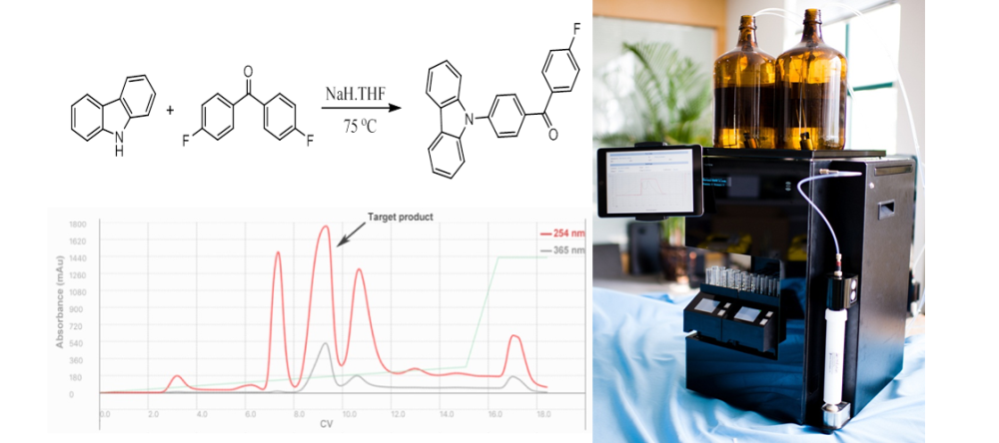
Wenjun Qiu, Bo Xu
Application R&D Center
Introduction
With the development of biotechnology as well as peptide synthesis technology, Organic optoelectronic materials are a kind of organic materials having photoelectric activities, which are widely used in various fields such as light-emitting diodes (LEDs, as shown in Figure 1), organic transistors, organic solar cells, organic memory, etc. Organic optoelectronic materials are usually organic molecules rich in carbon atoms and having a large π-conjugated system. They could be classified into two types, including small molecules and polymers. Compared with inorganic materials, organic optoelectronic materials can achieve large area preparation as well as flexible device preparation by a solution method. Furthermore, organic materials have a variety of structural components and broad space for performance regulation, which making them suitable for molecular design to achieve the desired performance as well as preparing nano or molecular devices by bottom-up device assembly methods, including the self-assembly method. Therefore, organic optoelectronic materials are receiving more and more attention from researchers because of its inherent advantages.
Figure 1. A type of organic polymer material which could be used to prepare LEDs .Reproduced from reference 1.
Figure 2. The photo of SepaBean® machine, a flash preparative liquid chromatography system.
To ensure better performance in the later stage, it is necessary to improve the purity of the target compound as much as possible in the early stage of synthesizing organic optoelectronic materials. SepaBean® machine, a flash preparative liquid chromatography system produced by Santai Technologies, Inc. could perform the separation tasks at the level from milligrams to hundreds of grams. Compared with traditional manual chromatography with glass columns, the automatic method could greatly save time as well as reduce the consumption of organic solvents, offering an efficient, rapid and economical solution for the separation and purification of synthetic products of organic optoelectronic materials.
Experimental Section
In the application note, a common organic optoelectronic synthesis was employed as an example and the crude reaction products were separated and purified. The target product was purified in a rather short time by SepaBean® machine (as shown in Figure 2), greatly shortening the experimental process.
The sample was the synthetic product of a common optoelectronic material. The reaction formula was shown in Figure 3.
Figure 3. The reaction formula of a type of organic optoelectronic material.
Table 1. The experimental setup for flash preparation.
Results and Discussion
Figure 4. The flash chromatogram of the sample.
In the flash preparative purification procedure, a 40g SepaFlash Standard Series silica cartridge was used and the purification experiment was run for about 18 column volumes (CV). The target product was automatically collected and the flash chromatogram of the sample was shown in Figure 4. Detecting by TLC, the impurities before and after the target point could be effectively separated. The entire flash preparative purification experiment took a total of about 20 minutes, which could save about 70% of the time when comparing with manual chromatography method. Furthermore, the solvent consumption in automatic method was approximately 800 mL, saving about 60% of the solvents when comparing with manual method. The comparative results of the two methods were shown in Figure 5.
Figure 5. The comparative results of the two methods.
As shown in this application note, the employment of the SepaBean® machine in the research of organic optoelectronic materials could effectively save lots of solvents and time, thus speeding up the experimental process. Furthermore, the highly sensitive detector with wide range detection (200 - 800 nm) equipped in the system could meet the requirements for visible wavelength detection. Moreover, the separation method recommendation function, a built-in feature of the SepaBean® software, could make the machine much easier to use. Finally, the air pump module, a default module in the machine, could reduce the environmental contamination by the organic solvents and thus protect the health and safety of the laboratory personnel. In conclusion, the SepaBean®machine combined with the SepaFlash purification cartridges could meet the application demands of the researchers in the field of organic optoelectronic materials.
1. Y. –C. Kung, S. –H. Hsiao, Fluorescent and electrochromic polyamides with pyrenylaminechromophore, J. Mater. Chem., 2010, 20, 5481-5492.
Post time: Oct-22-2018

